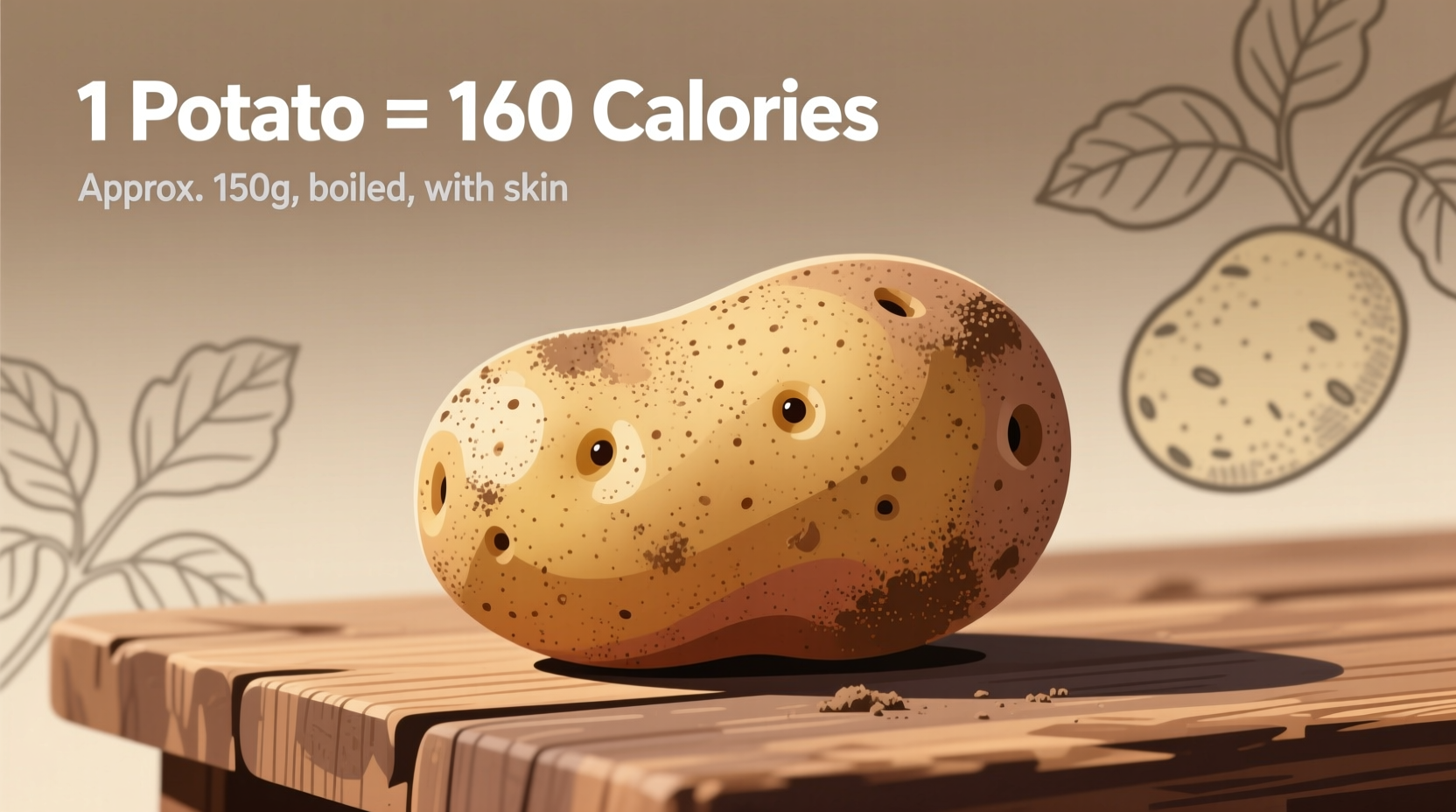Understanding Potato Calories: Your Complete Reference Guide
When tracking your daily nutrition, knowing the exact calorie content of staple foods like potatoes is essential. Potatoes often get misunderstood in diet conversations, but understanding their true nutritional profile reveals why they've been a dietary cornerstone across cultures for centuries.
Calorie Counts by Potato Type and Preparation
The calorie content of potatoes varies significantly based on variety, size, and cooking method. Here's what you need to know before adding potatoes to your meal plan:
| Potato Type | Raw (150g) | Boiled (150g) | Baked (150g) | Fried (150g) |
|---|---|---|---|---|
| Russet | 110 kcal | 120 kcal | 130 kcal | 260 kcal |
| Red | 100 kcal | 110 kcal | 120 kcal | 240 kcal |
| Sweet Potato | 135 kcal | 145 kcal | 150 kcal | 280 kcal |
| Yukon Gold | 105 kcal | 115 kcal | 125 kcal | 250 kcal |
Data sourced from the USDA FoodData Central, the authoritative database for nutritional information in the United States. These values represent medium-sized potatoes (approximately 150 grams) to provide consistent comparison points.
Key Factors That Impact Potato Calorie Content
Three primary elements determine the final calorie count when you eat potatoes:
- Size matters significantly - A small potato (130g) contains about 100 calories, while a large one (250g) can reach 200 calories
- Cooking method dramatically affects calories - Baking preserves natural calorie content, while frying can double it due to oil absorption
- Additives transform nutritional profiles - Just 1 tablespoon of butter adds 100 calories, while sour cream contributes 60 calories per tablespoon

Nutritional Benefits Beyond Calories
Potatoes offer impressive nutritional value that extends far beyond their calorie count. One medium Russet potato provides:
- Approximately 27 grams of carbohydrates (10% of daily value)
- Nearly half your daily vitamin C requirement
- Significant potassium content (more than a banana)
- 3 grams of dietary fiber, especially when eaten with skin
- Natural plant compounds with antioxidant properties
According to research published by the National Institutes of Health, potatoes contain resistant starch when cooled after cooking, which functions as a prebiotic fiber supporting gut health.
Practical Portion Guidance for Different Dietary Goals
Understanding how to incorporate potatoes into various eating patterns helps maximize their nutritional benefits:
- For weight management: Stick to one medium potato (150g) prepared by baking or boiling, with minimal added fats
- For athletic performance: Include 1-2 potatoes as part of your post-workout meal for optimal carbohydrate replenishment
- For blood sugar management: Pair potatoes with protein and healthy fats, and consider cooling them after cooking to increase resistant starch content
- For general health: Rotate between white and sweet potatoes to benefit from their different nutrient profiles
Common Misconceptions About Potato Nutrition
Several myths persist about potatoes and their role in healthy eating:
- "Potatoes are just empty calories" - False. Potatoes provide essential vitamins, minerals, and fiber, especially when eaten with skin
- "All potatoes spike blood sugar" - While potatoes have a higher glycemic index, preparation method and food combinations significantly moderate this effect
- "Sweet potatoes are always healthier" - Both types offer unique benefits; white potatoes provide more potassium while sweet potatoes offer more vitamin A
Research from the American Heart Association confirms that when prepared healthily, potatoes can be part of heart-healthy dietary patterns when consumed in appropriate portions.
Maximizing Nutritional Value: Smart Preparation Tips
You can significantly enhance the nutritional profile of potatoes through simple preparation techniques:
- Always leave the skin on when possible - it contains nearly half the fiber and many nutrients
- Cool cooked potatoes before eating to increase resistant starch content by up to 300%
- Pair with healthy fats like olive oil to enhance absorption of fat-soluble vitamins
- Avoid deep-frying; opt for baking, roasting with minimal oil, or boiling instead
- Combine with protein sources to create balanced meals that promote satiety
How Potatoes Compare to Other Common Starches
Understanding where potatoes fit among other carbohydrate sources helps with meal planning:
- Per 150g serving, potatoes contain fewer calories than cooked white rice (200 calories) or cooked pasta (220 calories)
- Potatoes provide more potassium than rice, quinoa, or pasta
- Compared to bread, potatoes generally offer more vitamins and minerals per calorie
- Sweet potatoes contain significantly more vitamin A than white potatoes or other common starches
These comparisons come from the Harvard T.H. Chan School of Public Health, which emphasizes that all whole food carbohydrate sources have nutritional value when consumed as part of balanced eating patterns.











 浙公网安备
33010002000092号
浙公网安备
33010002000092号 浙B2-20120091-4
浙B2-20120091-4